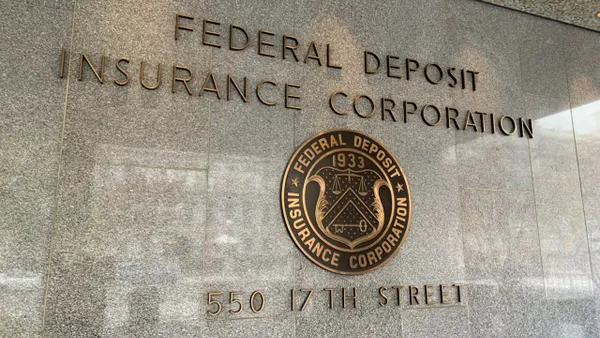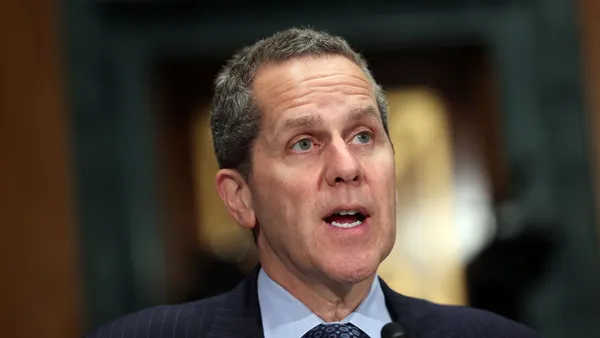Dive Brief:
- The Federal Reserve this week approved a rule to simplify capital requirements for large banks, instituting a more flexible standard for capital requirements under the Dodd-Frank Act, enacted in the aftermath of the 2008 financial crisis.
- Instead of requiring capital based on the Fed’s non-stress capital requirements, the Fed will now gauge capital requirements based on a bank’s risk profile using a "stress capital buffer," or SCB. Bigger, more complex banks will have higher capital requirements while less-complex banking institutions will have lower capital requirements.
- "By combining the Board's stress tests — which project the capital needs of each firm under adverse economic conditions — with the Board's non-stress capital requirements, large banks will now be subject to a single, forward-looking, and risk-sensitive capital framework," the Fed said in a statement. "The simplification would result in banks needing to meet eight capital requirements, instead of the current 13."
Dive Insight:
The Fed’s new rule follow's the government’s trend of rolling back certain banking regulations under Dodd-Frank, most recently the Fed’s decision to pare back the Volcker Rule.
Major financial institutions like Bank of America, Citigroup, Goldman Sachs and JPMorgan Chase have not yet commented on the new stress test rule, but the American Bankers Association (ABA) sent a letter to the Fed supporting the simplified rule two years ago when it was first proposed.
"Ensuring that the banking sector has adequate levels of high quality capital is key to the safety and soundness of the banking system and economy as a whole," the ABA wrote in 2018. "Capital regulation for U.S. banks is far more complex than needed to achieve that supervisory result."
The Fed argues banks are in a much better financial position than they were 10 years ago.
"Large banks have substantially increased their capital since the first round of stress tests in 2009," the Fed said in its statement announcing the changes. "The common equity capital ratio of the banks in the 2019 Comprehensive Capital Analysis and Review (CCAR) has more than doubled from 4.9% in the first quarter of 2009 to 12.2% in the fourth quarter of 2019, with total capital doubling to more than $1 trillion."
Fed Governor Lael Brainard, who cast the sole dissenting vote, fears the rule will encourage the kind of behavior from the large banks that contributed to the 2008 financial crisis.
"Today's rule gives a green light for large banks to reduce their capital buffers materially, at a time when payouts have already exceeded earnings for several years on average," she wrote in her dissent.
"Banks worked hard to build their capital buffers following the crisis. It is imprudent to reduce the loss absorbing capital at the core of the system at this point in the cycle, when large banks are internationally competitive, and payouts have been exceeding earnings," Brainard said.
Randal Quarles, the Fed's vice chair for supervision, doesn't share the concern. "The stress capital buffer materially simplifies the post-crisis capital framework for banks, while maintaining the strong capital requirements that are the hallmark of the framework," he said on Wednesday.










